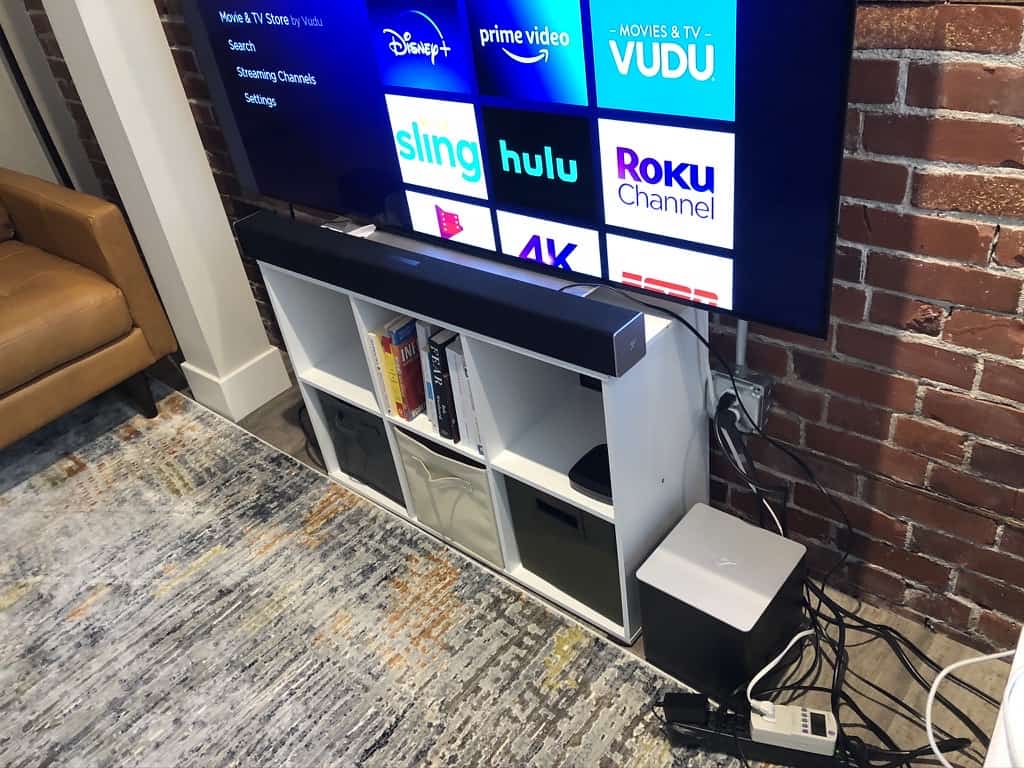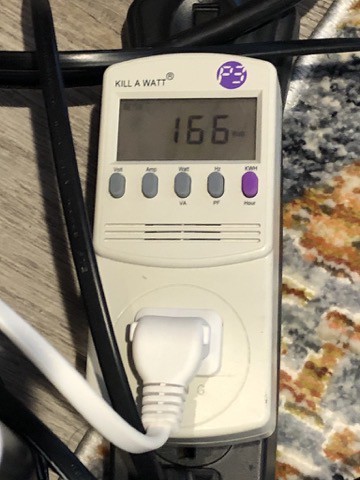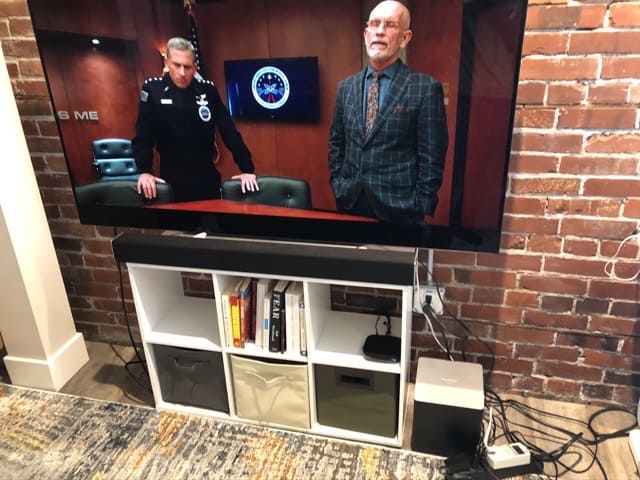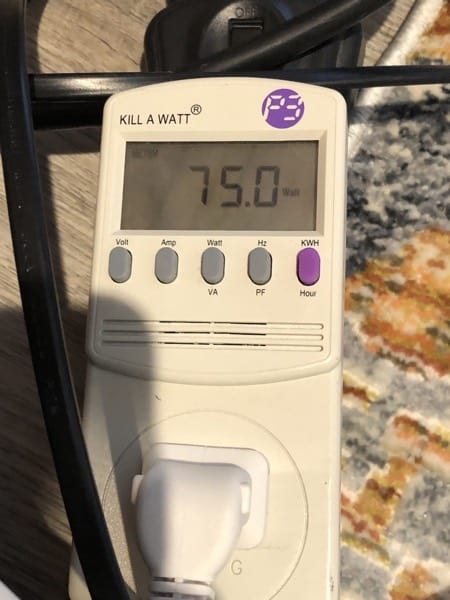Last Updated on May 3, 2023 by Rod Olivares

One of the biggest reasons that most people buy a whole house or home standby generator is to have a backup power source in the event of a power outage or blackout.
Generators can help power up all types of electronics, appliances, and tools to ensure you are keeping your family safe and comfortable until power returns. To help you understand what size generator you need, we have created this whole house generator sizing calculator and guide. I will explain what size of generator you need to power one or the entirety of your home appliances.
If you want a portable generator that can power a whole house, you’re looking for at least a 10,000 watt generator or a likely more in the 15,000 watt portable generator range.
Whole house generator size calculator
This simple calculator will quickly show you what size in Kw or Watts of a generator you might need to power your house. This tool is just an estimate. This sizing tool is specific to powering a whole home, see my “what size generator?” calculator for more general watt estimations.
Do you have central AC?
One of the largest variables in sizing a whole house generator is if you must power a central AC unit. Select your central AC size (1 TON to 5 TON. 2 to 3 TON is the most common residential size).
What is a whole house generator?
A whole house generator is a portable or permanently placed generator that supplies power to your home. While you can use them at any time, they usually activate when the power goes out due to a storm. These generators come in various sizes to power up small electronics such as cell phones up to larger generators that can power your whole house.
There are multiple ways to use a portable generator to power your home, and the best part is, you can use it any time you would like to power other items. Depending on what you want to do with your generator throughout the year will determine how you will need to hook it up to your home.
How much does a whole house generator cost?
Whole house or home backup generators start at ~$3,000 for a 10kW model and go up to around $30,000 for a 150kW model. Most residential homes will need a 10-20kW generator. A popular 16,000 or 16kW whole house generator from Generac will put you back about $4,200 (plus installation, which will cost several thousand dollars at a minimum).
Here is a popular 16kW whole house generator from Generac (Generac is the most popular home backup generator manufacturer):
How do I connect a whole home generator?
Hooking up a generator to your home can be broken down into two different routes, with extension cords to each appliance when needed, or through a transfer switch. Both have their advantages, so let’s take a closer look at each method to see which is going to be the best for you.
Extension Cords – For those who want to use their generator to power their home only in emergencies, plugging up appliances with extension cords may be the best route to take. A portable solution allows you to keep the generator stored away until you need to use it. Simply bring out the generator, plug up your appliances with high-quality extension cords, and you are good to go.
One downfall of doing this is that you will have to spend time hooking up all of your appliances in the dark or possibly in bad weather. You will also have extension cords running through your house, which could pose a health risk.
Transfer Switch – A transfer switch is a built-in switch system that allows you to run one cord from your home to your generator to allow for backup power instantly. You will require a transfer switch system for most whole house or home backup generator systems. These can be manually controlled or automatically controlled by the loss of power. However, not all generators are transfer-switch ready, and this feature is for larger generators that have the wattage capacity for bigger appliances.
One downfall of having a transfer switch installed is that it will be more expensive, and you will usually want your generator to stay in one spot. With a transfer-switch, if you’re going to use your generator for anything else, you will have to unplug it, move it to where you need, and move it back to plug it back in. With a more massive generator, this can become quite a process. However, it is convenient to have when you need power quickly.
How big a generator do I need to run my house?
When searching for a generator to run your home, how big of a generator you may need always comes up. After all, you do not want a power outage with a generator that cannot power your most essential appliances.
The correct generator size you will need for your home will depend on the size of your home, the appliances you will be using, and how long you will run it. For those who just want to keep their cell phones charged and a TV powered to keep up with the news, a smaller, portable generator is perfect. For those who want to power up A/C systems, furnaces, other larger appliances, or a whole home, you likely need a stationary home backup generator. See my post on the best whole house generators for a list of good portable and stationary whole house generator options.
Luckily, you can calculate the watts you expect to use to determine the size generator you are going to need.
Can a portable generator power or run a whole house?
You will likely need at minimum a 10,000 Watt or 10kW generator to power a whole house.
There are portable generators, that are cheaper than stationary home backup generators, in the 10,000 and 15,000 watt range. But likely, if you want a true home backup generator system, you will want a stationary generator in the 16,000kW and higher range. You can use the calculator above to see what size generator wattage you need to power the items in your house.
To figure out what generator size is best for your home needs, you will have to do a little research. First, you will want to list all of the appliances, electronics, and tools that you expect to use with your generator. Next, add up the wattage or all of the appliances you would expect to use simultaneously. Use this number to determine what size generator you need.
Use the calculator at the top of this page to quickly estimate how many watts you will use and what size generator you will need. Most whole-home generators start at the 10kW (10,000 watts) range up to 150kW for the most massive mansions!
It is always a good idea to get a larger generator than what you need for a few different reasons. One, you do not want to run your generator at full capacity at all times. Running near max rated wattage can cause overload and will break down your generator quicker. Second, your appliances can start to use more wattage over the years as they grow older. Lastly, you never know when you may need to hook another tool up, so having extra watts is always a good idea.
How many watts do common appliances use?
The appliances in your home are going to have specific wattage ratings set by the manufacturer. These ratings will give you a quick and easy way to determine how much your generator is going to be able to handle. Smaller electronics and appliances use less wattage than larger devices such as refrigerators, A/C systems, and ovens. If you cannot find a label stating the wattage ratings for your appliance, you can always look it up online or call the manufacturer.
Let’s take a few of the most popular appliances you would use with a generator to give you a better idea of the wattage ratings for each.
Refrigerators ~ 1000-1500 Watts/Day
Refrigerators are among the first things that people think about hooking up to their generator due to the potential of food spoiling. If you have your generator powering your refrigerator/freezer, you can keep perishables lasting longer if you have an extended power outage. Of course, this is going to depend on size as well. To preserve power, you can move your items to a mini-fridge if you have one as they use less wattage. Refrigerators also do not run at full wattage all day, only when they cycle on to cool down.
TVs ~ 100-200 Watts
A TV can be beneficial when dealing with a blackout that was triggered by a storm. A TV would allow you to keep with the news, updates on the storms, and instructions mandated by your city if you were affected by a natural disaster. TV’s come in all shapes and sizes, but you can expect them to use around 100-200 watts.

I ran a test of my 65-inch Samsung LED TV. It ran ~150 Watts while on the Roku Screen.

The TV used about ~75 Watts while playing a show on Netflix.


Air Conditioning Systems/Furnace ~ 3000-4000 Watts
Perhaps one of the most important things you may need to power up is going to be an A/C system or furnace/heater. These can come in all shapes and sizes as well, meaning you will have a broad spectrum of wattage demands to consider. Contacting the manufacturer or finding a wattage label will be highly important to ensure you have enough wattage to keep you and your family comfortable during the outage.
Ovens ~ 1200 Watts
If you live in an area that experiences longer blackouts or power outages, you may want to use creature comforts like an oven to keep yourself fed. While this isn’t always necessary, it is always good to know how many watts it will use. Most ovens are going to be in the 1200 watts range.
Microwaves ~ 1000 Watts
An easier appliance to use during a power outage is going to be a microwave. Microwaves are quick, low wattage, and easy to move if needed. Microwaves can be an easy way to heat just about any food in the case of a blackout without having to worry about using a higher wattage for longer periods.
Toaster ~ 800 Watts
A common 2-slot toaster will use just over 800 Watts when toasting. Check out the video I made of my toaster at home with a watt-meter attached to get a realtime Watt measurement:
Radios ~ 10 Watts
As the lowest wattage demander on the list, a radio can be one of the most useful electronics you will have. A radio will allow you to not only keep up with the latest news updates, but it will give you some entertainment to take your mind off of the blackout.
Cell Phones/Laptops/Small Electronics ~ 50 Watts
Last but not least are small electronics such as cell phone chargers or laptops. A cell phone charger is a must nowadays as your phone is a great way to find the latest news at the press of a button, but it can call for help if needed. Having a charged cell phone will give you a better advantage of finding out what steps to take next during a blackout or natural disaster.
What features should I look for in a whole house generator?
A portable generator can be pretty basic to give you the bare minimum that you need or be fully furnished with all types of upgrades to make using the generator much easier. Let’s take a look at some of the best features you can look for to get the best of the best generator.
Outlet Selection
If you are going to be powering multiple appliances or devices with your generator, you are going to want a generator that has a wide variety of outlets. A great outlet selection will allow you to make sure you can power up different appliances simultaneously. For example, this can allow you to run a refrigerator, an A/C system, and charge your cell phone all at the same time.
Wheels/Handle
If you plan on moving your generator to multiple locations, you will want to find a generator with wheels and a foldable handle. Most larger portable generators are going to offer this setup to make moving the 200-500lb generators much easier. If you plan on using this generator in rougher terrain, look for inflatable rubber tires. If you are going to be using it on solid, flat ground, you can get one with plastic tires.
Electric Start
While most generators are going to offer a recoil style start, this is not always ideal for those who have trouble pulling a recoil cord. For those who want something easier to start, you can opt for an electric start generator. These generators are going to offer a push button that starts the generator instantly. You can also find generators, such as a Westinghouse, that has a keyfob programmed to allow you to start the generator from a distance. This remote start feature is great for starting your generator during storms or in colder weather.
Transfer Switch Capable
For those who are going to want to connect their generator to their home permanently for instant transfer of power, you will want to find a generator that is transfer ready. A transfer switch connects your main power feed and the generator in the event of a blackout. Get a transfer-switch professionally installed by an electrician.
Conclusion
Now that we have looked at everything you need to know about home backup generator sizing, you should be able to find the perfect generator for your specific application. There are many different brands of generators to choose from to get everything you need out of a generator. Since picking up a generator can be quite the investment, you must do all of the necessary research to ensure you are getting what you need to power your whole home.

Scott Krager purchased generatorgrid.com in the summer of 2020 and quickly began to buy every generator under the sun! He currently has over a dozen generators and the number is growing quickly. He lives in Portland, OR near his family and friends.
GeneratorGrid.com is an independent review business. I am not affiliated with any manufacturers and do not accept paid reviews. When you buy through my links, I may earn a commission which helps me purchase more generators for testing. - Scott Krager

